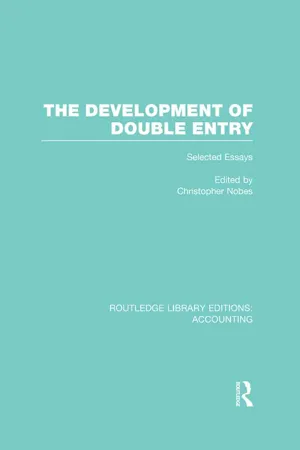![]()
by Almand R. Coleman, William G. Silenkir* and Williard E. Stone
Occasionally, we find business records from a previous era sufficiently complete to allow the accounting historian to undertake an analysis of the then existing accounting and management practices. Such is the case with the records of William Prentis and Company, a leading colonial store in eighteenth century Williamsburg, Virginia. This store has been described as the “most solvent and most respected business in Williamsburg, if not in the entire colony.”1 Though the store's journals and ledgers have been lost, its annual reports with balance sheet and supplementary information per mit speculation concerning the development of accounting during the colonial era.2
The store operated under the name of William Prentis and Company from 1733 to 1765. Its beginning can be traced to about 1701 when two brothers, Dr. Archibald Blair and the Reverend James Blair,3 and a mutual friend, Colonel Philip Ludwell, opened a general merchandise store in the home of the Reverend Blair. In 1719, the storr was relocated on the Duke of Gloucester Street, in Williamsburg, where it remained until 1740 when expanding operations required greater space, and a brick building was constructed on the same site. This building exists today in restored colonial Williamsburg.
The accounting practices of William Prentis and Company from 1733 to 1779 seemed to meet the requirements of the economic environment of the period.
The Blair-Ludwell partnership controlled and managed the store until sometime before Ludwell's death in 1727, when the Blair brothers bought Ludwell's interest. The next owner-manager change took place in 1733, when Archibald Blair died and the firm's organization changed from a simple partnership to a business operated by a professional manager, William Prentis. From 1733 the store was operated under the name of the owner-manager:
□ William Prentis and Company—1733 to 1765.
□ John Prentis and Company—1765 to 1775.
□ Robert Prentis and Company—1775 to 1779.
The business imported and sold goods from England as well as merchandise purchased locally. The company also acted as an exporter, and the 1733 balance sheet disclosed that two hogsheads of tobacco were awaiting shipment to England and a quantity of pork and corn, costing £56.4.0, was en route to Jamaica. Undoubtedly the trade with Jamaica included imports of sugar and rum.
The events leading to the Revolutionary War, and the war itself, brought the business to an end in 1779. Disruptions in trade abroad are indicated in the store's annual reports beginning in 1773. At the end of that year, the store's report showed inventory of imported goods at £4,476, the largest in the store's history. Imported goods inventory declined to £2,623 in 1774, to £1,560 in 1775, and to £280 on February 4, 1777, when the store's operations were suspended. Thereafter, Robert Prentis stayed on, at half salary, until 1780 to liquidate the assets of the business.
In summary, the business was in existence from 1701 to 1779, almost 80 years in the formative period of this country's economic and political de velopment.
Analysis of accounting records
For the period of William Prentiss tenure as professional manager, 1733–1765, and thereafter from 1765–1779, there were annual or biennial meetings of the owners. At these meetings, a financial statement was presented and attested to by the subscribers. These statements, fortunately preserved for us,4 serve as the basis for inquiry into the fol lowing aspects of the business: business organization, annual reporting format and disclosure, statement periods, accounting system, accounting principles, translation adjustments and management compensation.
Business organization
The owners of William Prentis and Company were designated subscribers and their proportionate ownership, which changed many times due to inheritance or sale of ownership shares, was disclosed in each of the reports accompanying the financial statements. The company was set up as a partnership, and ownership equity was not evidenced by formal certificates but stated in fractional proportions, e.g., 1/6, 9/24.
Although limited liability was not available to the owners, the organization had characteristics suggestive of a corporation:
1 It had a life independent of its owners, and owners' shares were transferable.
2 The managing owner had the autonomy usually associated with professional management and was paid a salary.
3 Owners' withdrawals were called dividends and were proportionate to the amount of each owner's capital account.
4 The company in 1759 repurchased the interests of two subscribers (similar to a corporation's buying its own stock) and adjusted the remaining owners' capital accounts accordingly.
5 Annual reports were provided for each owner, or his representative, just as today a stockholder is given a copy of a corporation's annual report.
The accounting books purchased must have been carefully kept since there is evidence that the company was a fiscal agent for the Virginia Colony, making payments for materials and work performed by individuals for the colony.
Annual reporting format and disclosure
Each yearend balance sheet was accompanied by a formally signed and witnessed report indicating the subscribers' “audit” of the company's accounts and their satisfaction with its owner-manager. The report began as follows:
“We the Subscribers having Examined and Audited the Accounts of William Prentis under the Name of himself and Company to the 25th of No...
